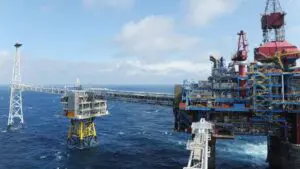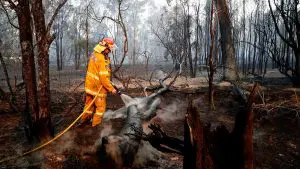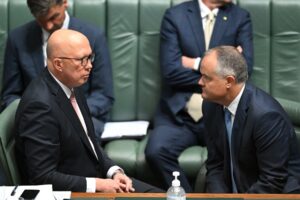Federal energy minister Josh Frydenberg has tried to make a big deal about what he calls the South Australia Labor government’s “reckless” pursuit of a 75 per cent renewable energy target by 2025. But if he continues to throw stones at those responsible, he might end up breaking a mirror.
The Australian Energy Market Operator has predicted, in a document published in December, that -– based largely on the federal renewable energy target – it expects South Australia to reach 73 per cent renewable energy by 2020/21.
It goes further. It says that South Australia will likely reach between 75 per cent and 80 per cent renewable energy share by 2026/27, depending on the policy pathway. And, just to underline the point, most of it is due to the federal government’s large-scale renewable energy target.
That range, to state the obvious, is well within the bounds unveiled by SA Premier Jay Weatherill last month at the same time as a 25 per cent “renewable storage” target that will seek 750MW of energy storage was also announced ahead of the upcoming state election.
That commitment elicited a ferocious response from Frydenberg, who described it as “reckless” and followed that with a similar attack in which he quoted two conservative business lobby groups and an equally conservative energy think tank to support him.
But all Weatherill has done is prove that he can add, and not be scared by the result:
The 50 per cent wind and solar the state currently enjoys, plus the wind and solar farms under construction, the big projects planned to make the Whyalla steel works viable, and the anticipated doubling in rooftop solar, all make 75 per cent well within reach.
And let’s be clear about what AEMO is basing its assumptions on; firstly for the minimum 75 per cent by 2026/27, in what it calls its “concentrated renewables” scenario that sees 51 per cent wind, 7 per cent large scale solar and the rest in rooftop solar.
“Under this scenario, additional renewable generation in South Australia is limited to that which is incentivised by the LRET.”
That would be your government’s policy, minister Frydenberg.
Is AEMO bothered by this amount of wind and solar in the grid?
Not that it lets on. It notes South Australia is likely to become a net exporter of power, it notes ElectraNet will build two “synchronous condensers” and contract output with some exiting gas plants to maintain power system security, and it assumes frequency is under control
The Electranet initiatives, says AEMO, will “reduce the need to enforce constraints on wind output.”
It sees total gas generation falling by nearly half, and notes that while some new transmission lines may be built, this won’t happen within the time frame it is looking at.
It also notes the opening of the Tesla big battery at Hornsdale, the world’s largest lithium-ion storage facility, which has been performing beyond expectations.
“South Australia, and the NEM, will continue to see a transformation of the generation mix to meet Australia’s state and federal energy and emissions targets and meet the ongoing need for system support services, such as frequency and voltage support potential, with new and innovative methods,” it says.
So, what does a 75 per cent or 80 per cent wind and solar grid look like.
Here are AEMO’s graphs. The first series (starting above and then below) is the concentrated renewables policy, which is effectively the LRET and the Victoria renewable energy target.
Note that it hasn’t factored some of the other battery storage or pumped hydro storage that may also get built in the meantime.
The graph above shows the month by month anticipated output from the various resources. Confusingly, AEMO chooses yellow for gas, and dark blue for rooftop solar.
Overall, it expects under this scenario for wind to account for 51 per cent of total generation, large-scale solar 7 per cent, and rooftop solar just less than 18 per cent, double what it is now.
This graph above shows what that looks like in a different graphic form for summer (above) and winter (below). Gas output falls dramatically in both seasons.
This next series of graphs shows the scenario AEMO calls “the dispersed renewables” scenario, where meaningful government policy takes the emphasis away from the actions of just one or two states.
Under this scenario, the share of wind power grows to 54 per cent by 2026/27, large-scale solar to 14 per cent, and rooftop solar output taking the total share of renewables to 80 per cent.
The big difference here (in the graph above) is the greater amount of net exports back to Victoria, particularly in the later years.
The next two graphs show the seasonal changes for the dispersed renewables pathway. Note that by 2026/27, the amount of rooftop solar PV nearly matches that of the only fossil fuel in the state of any note, gas generation.
It’s a phenomenal transition to a consumer powered grid, as we noted in this other story last year: South Australia’s stunning transition to consumer-powered grid.
In winter, rooftop solar goes back into its box. But one wonders, given the development of the Port Augusta solar tower and molten storage facility, a couple of pumped hydro projects, and some more battery storage, just how much gas will be burned in a decade’s time?













